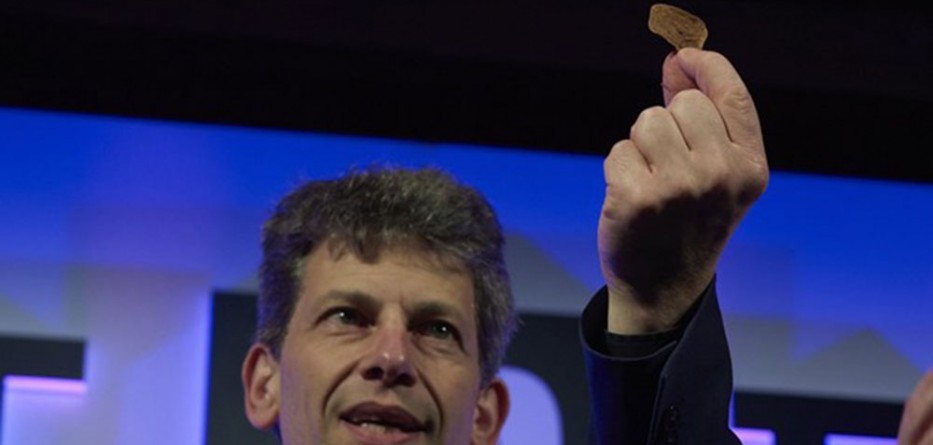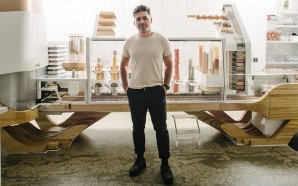More than 60 billion land animals are currently required to supply the demands of six billion people for meat and leather. Farming those animals requires 38 percent of all ice-free land, eight percent of global water and emits 14 percent of all greenhouse gas.
And those numbers are growing fast, Andras Forgacs told attendees at WIRED 2015; by 2050 a world of 10 billion people will require 100 billion animals to meet demand, he claimed.
“We’ve got a huge global dependence on animal products,” Forgacs said. But while that cycle probably isn’t sustainable, it will be profitable — for someone. “It goes without saying that meat is a huge growth market.” Meat alone is worth about $1 trillion per year already, while animal hides are a $63 billion global market.
“What if we could work additively and grow these materials from the cells themselves […] to grow animal products, and make them actually better.”
In the last two decades two technologies have risen to the challenge of realising the (actually very long-standing) dream of producing animal products in the lab: computational processing and advances in biology, such as the ability to sequence DNA, write DNA and other processes like the ability to yield protein through fermentation.
“They are the enabling technologies […] that used to be the province of medicine,” Forgacs said. But while the idea of ‘lab grown’ meat has hit the headlines in the past decade, Modern Meadow is starting first with leather, not meat “because if you think about it it’s the highest value density product we could go after […] leather per kilogram is more valuable than meat is.”
The leather ‘growing’ process is surprisingly simple to explain: cells are sourced from exceptional animals, grown in the lab in sheets and then developed into layers which are fused into tan, finished and designed into leather products. And all this without any of the “messy” parts of the tanning process like removing hair or fat.
The advantages are obvious — if leather can reliably be made in this way it will dramatically cut waste (85 percent of leather used for watch straps is wasted). It can also result in leather that is more durable, which can be made in different thicknesses and that could be cheaper. This process also uses 99 percent less land, with the associated savings on water, greenhouse gas and energy use, and removes the need for traceability and welfare monitoring.
Forgacs is also the co-founder of Organovo, a 3D bioprinting firm that is creating human tissue for use in pharmaceutical research. “In the future this technology could allow patients to have transplant organs grown for them,” he said. “That’s the future of this technology”.
Source: wired.co.uk









